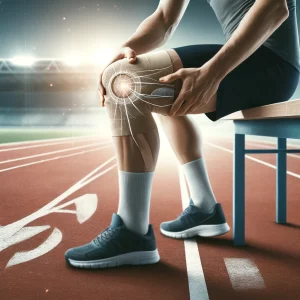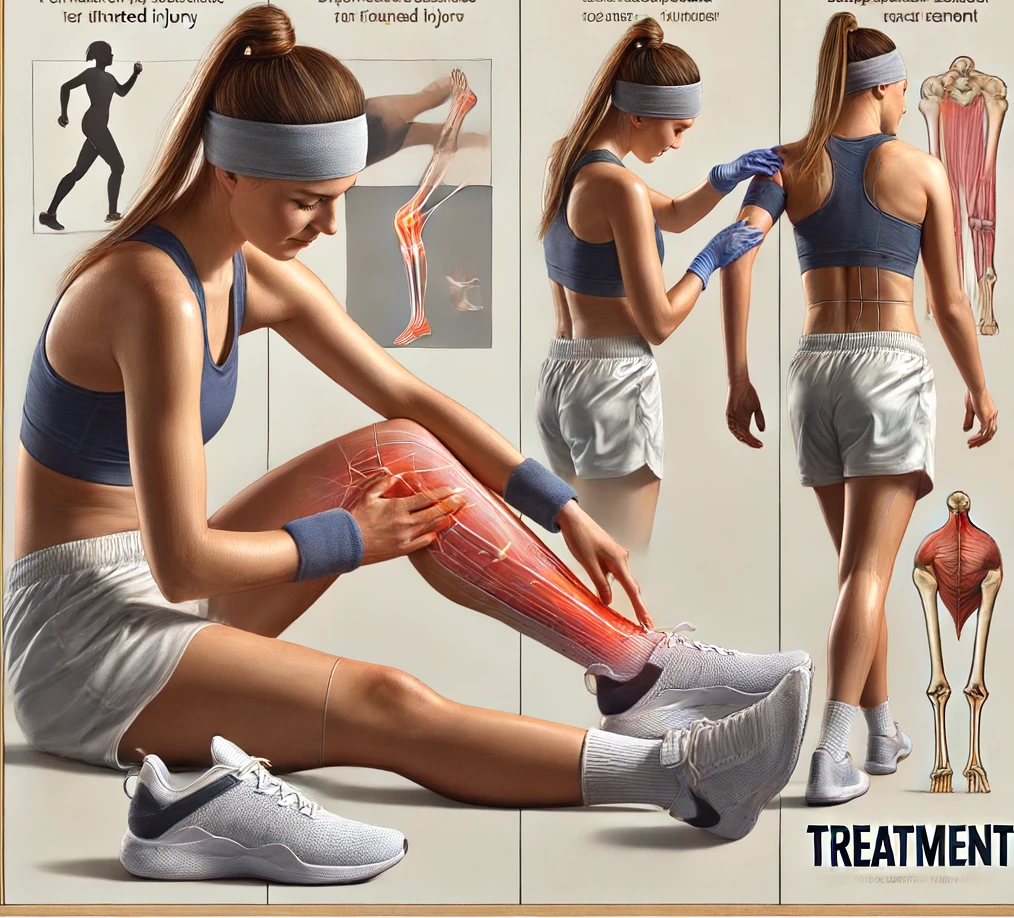Is the R.I.C.E protocol still up to date?




Rest, Ice, Compression and Elevation (RICE) has long been the cornerstone of acute soft tissue injury treatment. This was and is used as a conservative approach within the first 24-48 hours after the injury. This protocol aims to minimize bleeding, reduce swelling and minimize pain in the acute state of the injury, potentially speeding up the recovery process.
However, recent scientific evidence suggests that the RICE protocol may not be the best overall approach for all injury management scenarios. However, new findings support more active, movement-based strategies, such as MEAT (Movement, Excersise, Analgesia, Treatment), POLICE (Protection, Optimal Load, Ice, Compression, Elevation) as well as PEACE (Protection, Elevation, Avoidance of anti-inflammatory agents, Compression, Education) and LOVE ( Load, Optimism, Vascularization (formation of blood vessels) and Excersise).
These approaches emphasize the importance of early exercise, tailored exercises and holistic care to improve healing and functional recovery.
Does this mean that the RICE protocol is no longer applicable? No, the basic elements of RICE still have their value, especially in the immediate aftercare, RICE is crucial.
RICE should be used in the first 24-48 hours after an acute soft tissue injury. It is used to minimize bleeding and swelling at the injury site. The use of more aggressive interventions, such as massage, could lead to further tissue damage.
REST

Immobilization should be limited to the first few days after the injury. This allows scar tissue to form on the injured muscle fibers and withstand the forces caused by contractions without tearing again. By limiting the immobilization period to a short period of time, the negative effects of immobilization are prevented. Immobilization refers to the site of the injury and includes things like wearing weights or any other strenuous activity that increases blood flow to the injured part.
ICE

Ice therapy, also known as cryotherapy, reduces tissue metabolism and leads to a narrowing of the blood vessels. This physiological change slows down and prevents further swelling, which is an important aspect of being able to perform active ROM exercises early after the initial rest phase.
Ice also reduces the spread of nozioceptive (free nerve ending) nerve impulses in the brain, which can relieve pain and muscle spasms. However, the use of cryotherapy over a longer period of time can have a detrimental effect on the healing process. The damage can worsen if blood flow is reduced excessively, and the risk of skin burns and nerve damage increases with prolonged ice application. There is limited evidence on the appropriate dosage of ice therapy for acute injuries. However, research suggests that 10-minute ice treatments in combination with 10-minute periods without ice are most effective. Bear in mind that there is no optimum dosage that is ideal for all areas of the body.
Caution is advised when using it on people with hypersensitivity to cold (e.g. Raynaud’s syndrome, diabetes, cold urticaria) and especially on patients with circulatory insufficiency.
The ice should be wrapped in a damp towel or cloth to minimize the risk of superficial nerve or skin damage.
Current findings based on icing
- Icing delays macrophage migration after injury: implications for delayed healing The study by Miyakawa et al. (2020) provides insights into the possible mechanisms by which icing delays healing. The authors found that icing resulted in a significantly lower number of neutrophils 3 hours after injury and a significantly lower number of MCP-1+ cells 6 hours after injury compared to the group without icing. These results suggest that icing may hinder the migration of macrophages, which are essential for the resolution of inflammation and tissue repair.
Overall, the results of this study suggest that icing may delay healing by inhibiting the migration of macrophages to the injury site. This delay in the resolution of inflammation and tissue repair could ultimately prolong the recovery process.
Effectiveness of ice, compression and elevation on tissue repair: However, there is not yet sufficient evidence that RICE improves tissue repair.
In summary, although ICE therapy is well tolerated by patients, its effectiveness in improving tissue repair remains uncertain and is not supported by scientific evidence.
The observation that vasoconstriction can persist beyond the end of cooling is important for understanding the potential risks associated with ice therapy. While ice can initially reduce blood flow and inflammation, it is important to know that this effect can persist even after the ice is removed and the tissue has warmed up again. This prolonged vasoconstriction can lead to ischemia (reduced blood flow) and possibly contribute to the development of NFCI (non freezing cold injuri).
- Effects of cold therapy on recovery after exercise: potential for attenuated muscular and vascular adaptations : A Study by Yamane, Ohnishi & Matsumoto (2015) suggests that the regular application of cold to the muscles after exercise can attenuate the muscular and vascular adaptations to strength training. This is significant as it implies that the use of cold therapy after strength training could potentially hinder the positive adaptations that occur in the muscles and blood vessels as a result of training.
The results of this study underline the importance of carefully considering the timing and duration of cold therapy during recovery after exercise. While ice therapy can be helpful for relieving acute pain and treating inflammation in the short term, its use immediately after exercise may not be ideal for promoting long-term adaptation to strength training.
Compression

Compression is used to prevent further edema (swelling ) as a result of the inflammatory process and to reduce bleeding at the site of tissue damage. In order to achieve a comfortable compression force without causing pain or constricting the blood vessels to the point of occlusion, an elastic bandage should be used. The dressing should start distal to the injury and run proximally, overlapping each previous layer by half. It can also be used to minimally protect the injured body part from excessive movement, although this is not its main purpose.
Current findings on compression
- Evidence gaps in the use of compression for acute ankle sprains: Limited support from RCTs, The Study by van den Bekerom et al. (2012) points out that there is limited evidence from randomized controlled trials (RCTs) to support the use of compression in the treatment of acute ankle sprains. In addition, the study shows that there is no clear information on the optimal method, amount, duration or position (supine or elevated) for the application of compression treatment.
Ankle sprains are a common injury and compression therapy is often recommended as part of the RICE (Rest, Ice, Compression, Elevation) protocol for the treatment of acute injuries. However, the lack of high quality RCTs makes it difficult to determine the most effective approach to compression therapy for ankle sprains.
Without clear evidence from RCTs, healthcare providers must rely on clinical experience and expert opinion when deciding on the use of compression and the specific parameters for its application in the treatment of acute ankle sprains.
It is important to note that the lack of evidence does not necessarily mean that the treatment is ineffective or should not be used. Rather, it highlights the need for further research to better understand the potential benefits and risks of the treatment in question.
Elevation

Elevation prevents swelling by increasing venous return to the body’s circulation and reducing hydrostatic pressure, thereby reducing edema. Ensure that the lower limb is above the level of the pelvis.
Current findings on elevation
For the treatment of acute injuries, elevation is often recommended, which typically involves raising an injured limb above the level of the heart. However, the lack of high-quality randomized trials suggests that the effectiveness of an increase may not be well established or supported by robust scientific evidence.
While elevation is generally considered a safe and non-invasive intervention, its effectiveness can vary depending on the specific injury or condition being treated. Further research is needed to better understand the role of elevation in injury management.
Variations


- HI-RICE – Hydration, Ibuprofen, Rest, Ice, Compression, Elevation.
- PRICES– Protection, Rest, Ice, Compression, Elevation, Support (e.g. use of crutches, bandaging and taping…).
- PRINCE – Protectioin, Rest, Ice, NSAIDs (non-steroidal anti-inflammatory drugs), Compression and Elevation.
- RICER – Rest, Ice, Compression, Elevation, Referral.
- POLICE-Protection, Optimal Loading, Ice, Compression, Elevation.
- PEACE – Protection, Elevation, Avoid anti-inflammatories, Compression, Education.
LO
VE
– Load, Optimism, Vascularization and Exercise
Summary
The RICE protocol (Rest, Ice, Compression, Elevation) is a widely used approach for the treatment of acute soft tissue injuries.
Current studies and evolving perspectives are challenging the traditional RICE protocol. The importance of individualized treatment plans, taking into account the specific injury, patient preferences and goals, is becoming more prominent. The shift towards more active and movement-based approaches such as the MEAT (Movement, Exercise, Analgesics, Treatment) approach underlines the need for further research and differentiation in acute injury management.
To summarize , while the RICE protocol remains a valuable framework for injury management, current evidence and evolving perspectives suggest that a more individual and active approach may be more beneficial. Further research is needed to better understand the optimal treatment strategies for acute soft tissue injuries.

